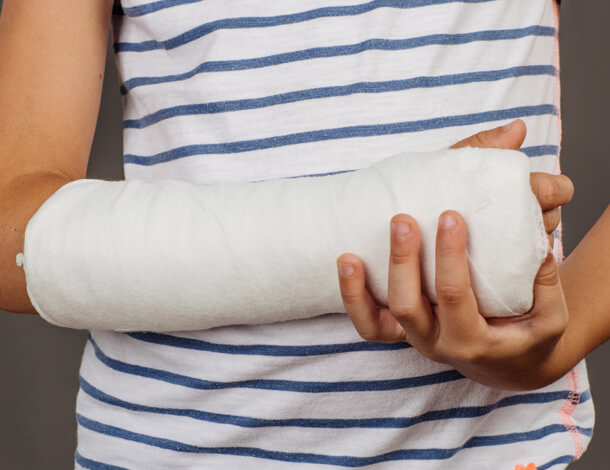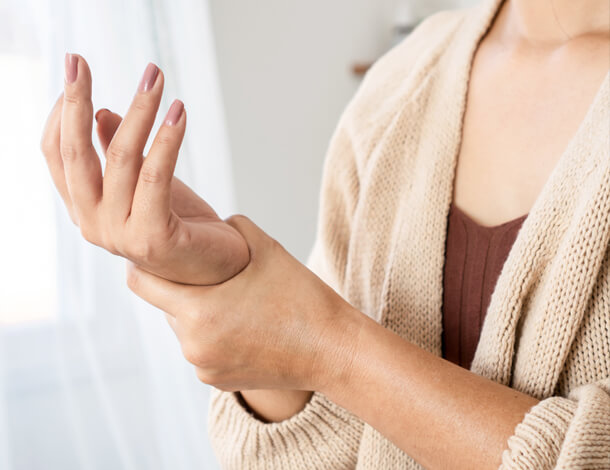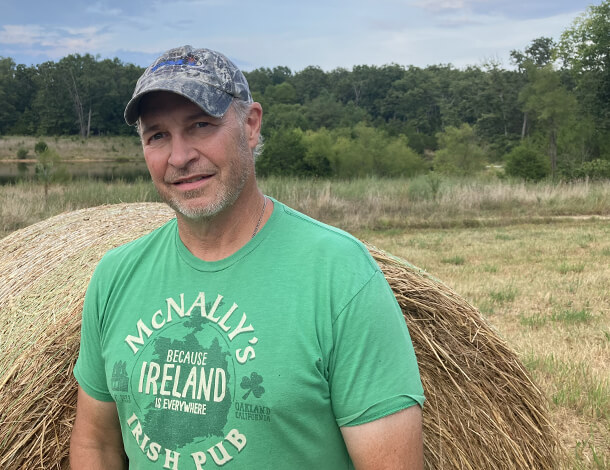58-Year-Old Caregiver Is Back to Helping Others After Severe Wrist Fracture
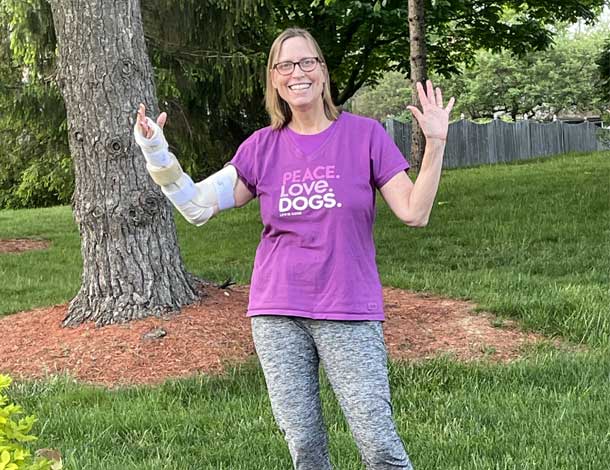
Kay N. thought her evening would be memorable. Still, she had no idea just how unforgettable it would be. It was a warm, late-April weekday evening. Kay was on her way to dinner when another driver slammed into her car. This stranger’s one action caused a serious accident that left Kay with a wrist fracture, distal radioulnar joint fracture, broken ribs, sternum fracture, clavicle fracture, and other injuries.
After the crash, Kay was rushed to the hospital for urgent care, including emergency procedures for her wrist and clavicle injuries. After an additional surgery and extensive therapy, she is back to normal activities one year later.
This is her story.
Kay N.’s patient story
Hometown: Crawfordsville, IN
Age: 58
A Life-Changing Freak Accident
The night it happened, I had a close friend with me. We were going out to dinner. She was getting ready to move to Oregon, so it was a thank you and goodbye.
On the way to eat, though, we were in a car accident. My friend had a wrist fracture, and she was taken to Witham Hospital and discharged. My injuries were more serious.
I was taken by ambulance to St. Vincent-Indianapolis.
I never lost consciousness, and the team there controlled my pain. I wasn’t sedated except for needing pain medication because of my distal radioulnar joint injury and other issues.
I’m so glad Dr. Reed Hoyer was the wrist surgeon on call to help. On April 29, he performed my first surgeries, repairing my clavicle and right wrist. The next day, I found out that I’d have to have another surgery for my broken wrist.
My radius had been smashed. There was a significant bone loss. So Dr. Hoyer told me he would have to do a second procedure—after I healed from the first—in which he’d need to take bone from my hip to put in there so that I could fully recover. That second broken wrist surgery was scheduled for June 15.
This Is What Real Customized Care Looks Like
Everything about my getting in a serious accident is more complicated in that my husband and daughter are disabled, and I’m their primary caregiver.
My in-laws are elderly and don’t drive outside Montgomery County, so I am in charge of taking care of everyone. I know I had a wrist fracture and other bad injuries, but finding a way to make sure there was someone who could take care of my family was the more significant concern for me.
I was very appreciative of Dr. Hoyer’s holistic approach to my treatment. He was aware of my circumstances. He knew that I had no one at my home to take care of me. He understood how important it was to repair my clavicle, too, so I wouldn’t have to go to a nursing home to start the recovery process.
Getting by With a Little Help From Her Friends and Family
My in-laws took care of my husband and daughter the first week after my accident. Then, my cousin came from Colorado to take care of them for ten days. That arrangement meant I could stay with a friend who is a nurse for about three weeks. Her son was home from college, and he also helped take care of me.
I was lucky.
A home health aide would stop by twice a week so that I could shower. I also worked with a physical therapist to keep my muscle strength up and work on my range of motion. All I could do was touch my fingers to the thumb in my right hand.
Before my second surgery, when I was staying at my friend’s house, I started to have terrible nerve pain in my wrist where one of the pins was so I called Dr. Hoyer’s office. I got an X-ray so the team could see what was happening. Then they took the pin out that was inserted during my first surgery for my wrist fracture because it was pressing on a nerve and causing me pain.
“If You Do What They Tell You, You Get Better”
After that first surgery, we really didn’t know how much of my right-hand function I’d regain, even with the second surgery. Still, I was hopeful. After the second surgery, I think everyone thought that I would have a great outcome, and I did.
My in-laws took care of my daughter with the second surgery, and I had to place my husband in an institution for a week.
The second surgery went great. No real problems. The people at IHTSC kept saying my hip would hurt from the bone grafting, so I was expecting it to be awful, but it wasn’t—not at all. I had a little pain when I walked, but it didn’t impede me from getting around.
I was much more comfortable after the second surgery for my wrist fracture (and a lot stronger since this was six weeks after the first procedures).
Before and after my surgeries, Dr. Hoyer was always very good at making sure that if I had a question or concern, he would address it.
The whole IHTSC staff was wonderful.
Healing With Slow-But-Steady Improvements
I asked the occupational therapist I was working with at Dr. Hoyer’s office (Scott) how long it would take to write my name as a signature. He told me that if all went well, it would be 12 weeks.
That was when it hit me: “Oh—this is going to take a long time.”
But, I regained it faster than they estimated, and—despite my wrist fracture injury—I could write my name again by my birthday. I can write left-handed, so I could function more than some people might have been able to, but writing using my left hand was slow.
Occupational physical therapy is fascinating to me. I did therapy at IHTSC one time a week and three times a day, every day, on my own at home. At one point, to get through all the required exercises, it would take me three hours a day just to work out my wrist and hand. I used all kinds of devices to stretch and increase my range of motion. I kept all of my exercises and tools in a Vera Bradley bag that I took everywhere with me.
IHTSC are specialists, so they made everything I needed right there on site. The one device that I had to wear to improve my range of motion looked like a dinosaur. That’s why I colored it and gave it a name. I wanted to make it fun.
Making Progress to Improve Range of Motion
When I went back two months later for a follow-up with Dr. Hoyer, I told him that I was having shoulder problems. That next month, he ordered an MRI to see if something was torn, but it turns out my shoulder was just inflamed. I got steroids and started therapy.
My shoulder’s range of motion is good, and I don’t have severe pain as I did right after my accident, but my shoulder is not 100% back to its full strength yet. I know it will come, though. I just have to keep doing more exercises to get back my strength. My therapist told me that range of motion always returns before strength.
During this entire experience, I didn’t have even one negative encounter. Once, when I was scheduled for a therapy appointment, I got stuck in traffic. I don’t live in Indianapolis so I didn’t realize they were tearing up Meridian. I don’t know the Indy area well, so I wasn’t aware of other ways to get to IHTSC’s office. I was 45 minutes late because I didn’t know an alternative route, but they were so gracious and kind even though I was late. They were very understanding about why I didn’t arrive on time.
Now 96% Back and Experiencing No Complications
Now, about one year later, I am so glad to have almost complete function of my right hand back after my wrist fracture. I would say I’m probably 96% back now. I’m happy to report that I finally was able to take a road trip and drive for 10 hours. I could feel it in my wrist and shoulder the next day, but it was better. My most significant deficit is with grip strength (like opening a jar). It can still feel a little sore when I do something like that.
Dr. Hoyer was great about answering my questions and ensuring I was doing well. I felt very safe and well-managed as his patient. I’ve had two friends that I’ve referred to Dr. Hoyer already, and they are both pleased with his care.
Do You Need Specialized Care for a Wrist Fracture After a Serious Accident?
Surgery to repair a broken wrist can deliver pain relief and bring back mobility if you’ve been hurt and have a crush injury or complex fracture.
An experienced upper extremity surgeon can check your injury and help you explore the best treatment options available.
If you’re still suffering after experiencing trauma (like Kay N., whose wrist fracture and other injuries required extra care), make an appointment for treatment recommendations from an expert at Indiana Hand to Shoulder Center.
We treat patients every day who have complicated upper extremity injuries. In fact, our unsurpassed expertise is so well-known that we’re often the preferred surgeons that other doctors turn to when they need care—for themselves, their friends, their families, and their patients.
Experts at Treating Wrist Fracture Injuries
Since 1972, patients from across Indiana and throughout the country have trusted Indiana Hand to Shoulder Center’s world-class wrist specialists.
“Dr. Hoyer was great about answering my questions and ensuring I was doing well. I felt very safe and very well managed.”—Kay N., Indiana Hand to Shoulder Center wrist fracture patient
Does IHTSC Help Patients With Wrist Fractures?
IHTSC is the right place to come when you need the best orthopedic specialist.
Whether your pain is due to a crush injury or fracture, our upper extremity team has the know-how, experience, and training to treat common and more complex wrist injuries and disorders.
How Do I See an IHTSC Wrist Specialist?
Request an appointment today, and take the first step to pain relief from a wrist fracture or other serious upper extremity injury.
Prefer to schedule by phone? Call us at (317) 751-5904.
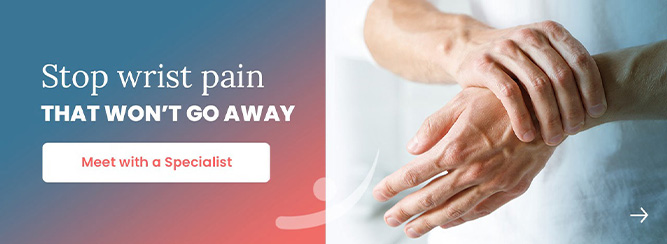
You Might Also Like …
Disclaimer: The materials on this website have been prepared for informational purposes only and do not constitute advice. You should not act or rely upon any medical information on this website without a physician’s advice. The information contained within this website is not intended to serve as a substitution for a thorough examination from a qualified healthcare provider. The display of this information is not intended to create a health care provider-patient relationship between the Indiana Hand to Shoulder Center and you.

